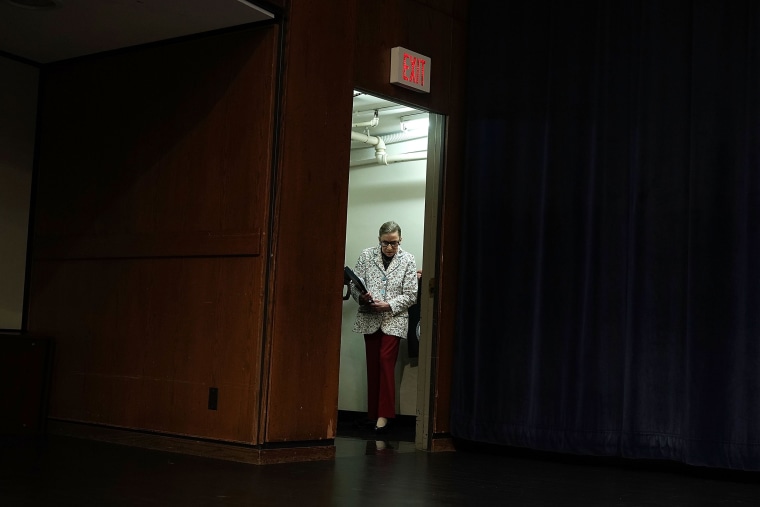The stumble that left Supreme Court Justice Ruth Bader Ginsburg with three fractured ribs proved to be good for her health.
On Friday, doctors at Memorial Sloan Kettering Cancer Center in New York City successfully removed two cancerous growths from the 85-year-old Ginsburg's left lung — nodules that were discovered early because of tests on her broken ribs, which were injured after a Nov. 7 fall, according to the the Supreme Court press office.
The procedure, a pulmonary lobectomy, in which a lobe of the lung containing the nodules is removed from the patient, has a high success rate in cases in which lung cancer is caught early. The key is to catch it before it can spread elsewhere in the body with potentially fatal consequences.
"Unfortunately, lung cancer is usually caught in an advanced stage after it shows symptoms, after it has already spread to the lymph nodes and elsewhere, and by then it’s only curable in a small minority of cases," Dr. John Heymach, chairman of thoracic, head and neck Medical Oncology at the MD Anderson Cancer Center in Houston, told NBC News on Friday.
"It’s possible, without knowing the specifics of her case, that early detection because of those broken ribs saved her life," said Heymach.

In Ginsburg's case, the lobectomy seems to have been a success, and "there was no evidence of any remaining disease," according to a statement from the high court.
Complicating early detection of that type of cancer is that the lung doesn't usually register pain until the tumor grows fairly large and is therefore harder to treat.
"When it gets big enough that it’s impinging on a big breathing pipe, then you start coughing; if it starts bleeding then you start coughing up blood; if it gets big enough to touch the chest wall, then you develop chest pain," Dr. Renato Martins, the medical director for thoracic/head and neck oncology at Seattle Cancer Care Alliance, explained.
"But until then a tumor can be three, four, five centimeters, and it can have very little symptoms."
According to Dr. Raja Flores, chair of thoracic surgery at Mount Sinai Health System in New York, "the way most cancers are diagnosed, is actually when they’re looking for something else."
"There are cases when someone comes in with belly pain, and then they do a CT scan on the stomach and find a pancreatic growth," said Flores.
The health of Ginsburg, who was appointed to the Court by former President Bill Clinton in 1993, is of great scrutiny at a time when President Donald Trump has already put two judges on the most powerful bench in the United States.
Ginsburg, the eldest judge on the Supreme Court, previously survived both colon and pancreatic cancer, and had a heart stent procedure four years ago.
CT scans specifically for lung cancers, however, are usually reserved for rare high risk cases, such as heavy smokers who've recently quit, so it's unlikely that Ginsburg would haven fallen into that category, said Heymach.
"The majority of these cases are just not identified through screening, except for serendipity," added Flores.
Which makes that rib-fracturing fall serendipitous.
"Sometimes it takes years for nodules to grow and spread to cause symptoms," said Heymach, "but if it is detected early in most cases its curable."